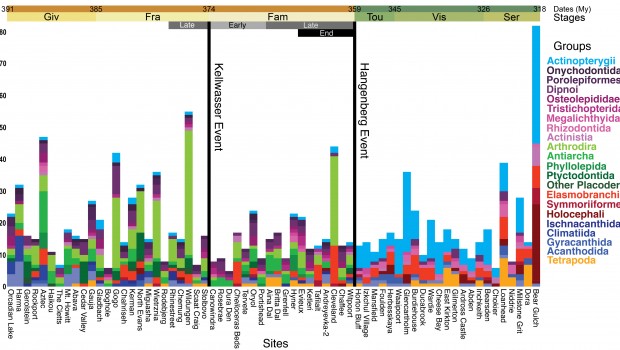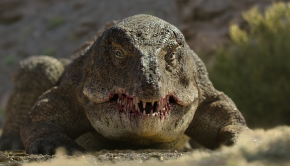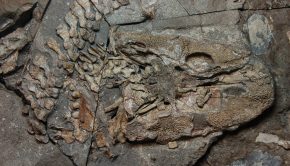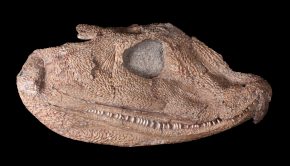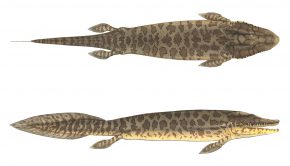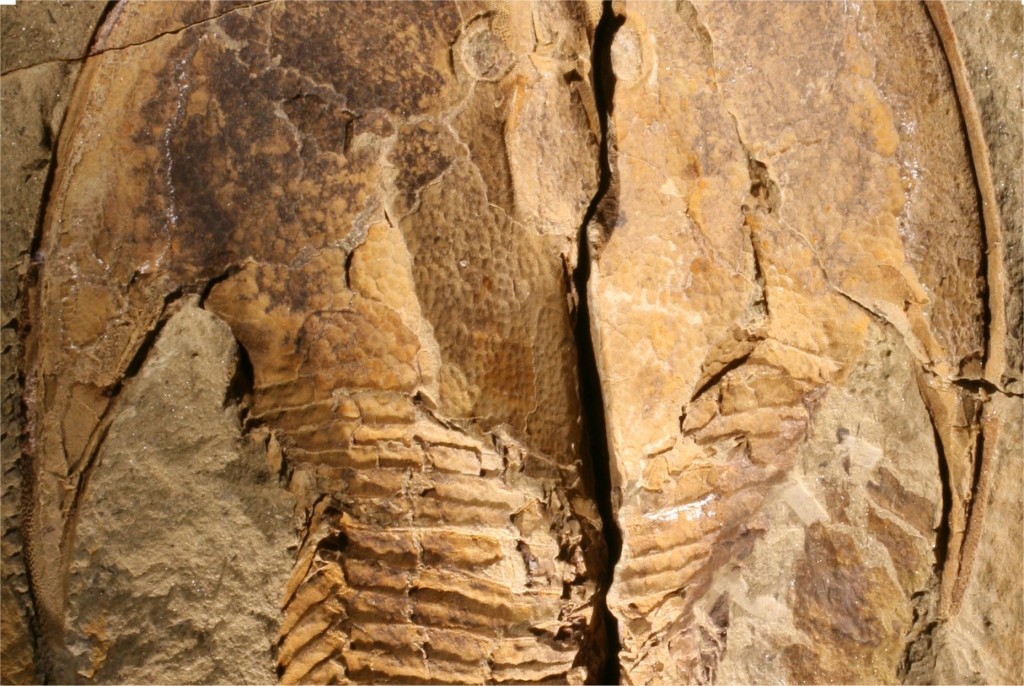Episode 6: Early vertebrate evolution and extinction
Vertebrates are one of the most diverse and successful groups of animals on the planet. Modern vertebrates come in an astounding array of sizes and shapes and can be found anywhere from the deepest oceans to the highest mountains. Yet vertebrates did not attain such success from the outset; their rise to dominance was gradual. The early evolution of vertebrates was a dynamic and, at times, a turbulent interval which, through studying the fossil record, we are able to understand in increasing detail. Today we are talking to Dr Lauren Sallan, who is an Assistant Professor at the University of Michigan studying early vertebrate evolution, biodiversity and ecology.
Podcast: Download (Duration: 49:00 — 67.3MB)
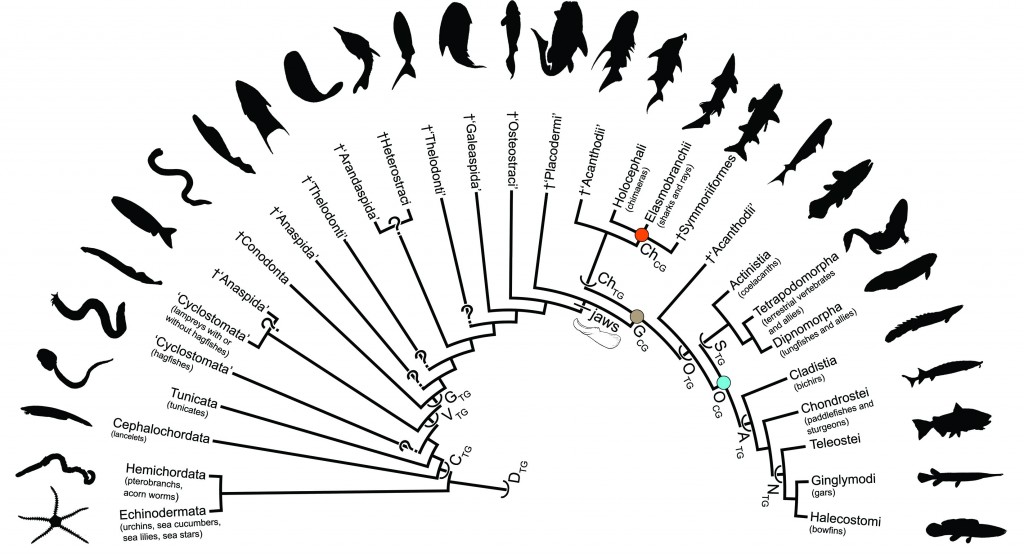
Vertebrates (V) are a diverse group of animals that first appeared in the Cambrian, although their record is scarce before the Silurian. The deep relationships of various vertebrate lineages are far from settled (see question marks in the tree above). Most vertebrates alive today, including humans, have jaws (Gnathostomata, G), while the living lampreys and hagfishes are jawless. However, during the Early Palaeozoic there existed a wide array of jawless fishes that bridged the anatomical gap between living jawless and jawed vertebrates (from Friedman and Sallan 2012).

Jawless fishes (Agnathans) dominated vertebrate ecosystems from the Cambrian to the early Devonian. Here are some armoured agnathans; a heterostracan (left) and a couple of osteostracans (right), from the early Devonian of Scotland. While these fishes lack jaws, they share characteristics with jawed vertebrates such as the presence of bone and dentine, revealing they are more closely related to jawed vertebrates than living lampreys. (Models by John Sibbick in the National Museum of Scotland)

The armor of these agnathans represents the earliest known dermal skeleton . It was composed of scales and boney plates with a characteristic 3-layered structure of superficial tooth-like dentine tubercles, a spongy bone layer and a plywood-like layer. In this Early Devonian scene, a pterygotid eurypterid eats a heterostracan while early jawed fishes called acanthodians (“spiny sharks) scavenge. This time period marks the start of the “Nektonic Revolution” in which many new groups of large predators appeared. (Models by John Sibbick in the National Museum of Scotland)

By the late Devonian, jawed fishes came to dominate vertebrate ecosystems, and the armored agnathans slowly dwindled towards extinction. The increased number of predators during this time period has been linked to the “Mid-Paleozoic Marine Revolution,” during which bottom-dwelling, shelly invertebrates developed new kinds of armor. (Models by John Sibbick in the National Museum of Scotland)

Late Devonian sites were dominated by members of two groups: the armored placoderms and the lobe-finned fishes. These fishes were found in both freshwater and marine sites and filled many different niches from bottom-dwelling scrounger to swimming apex predator. The first tetrapods appear among the lobe-finned fishes during this time. (Models by John Sibbick in the National Museum of Scotland)
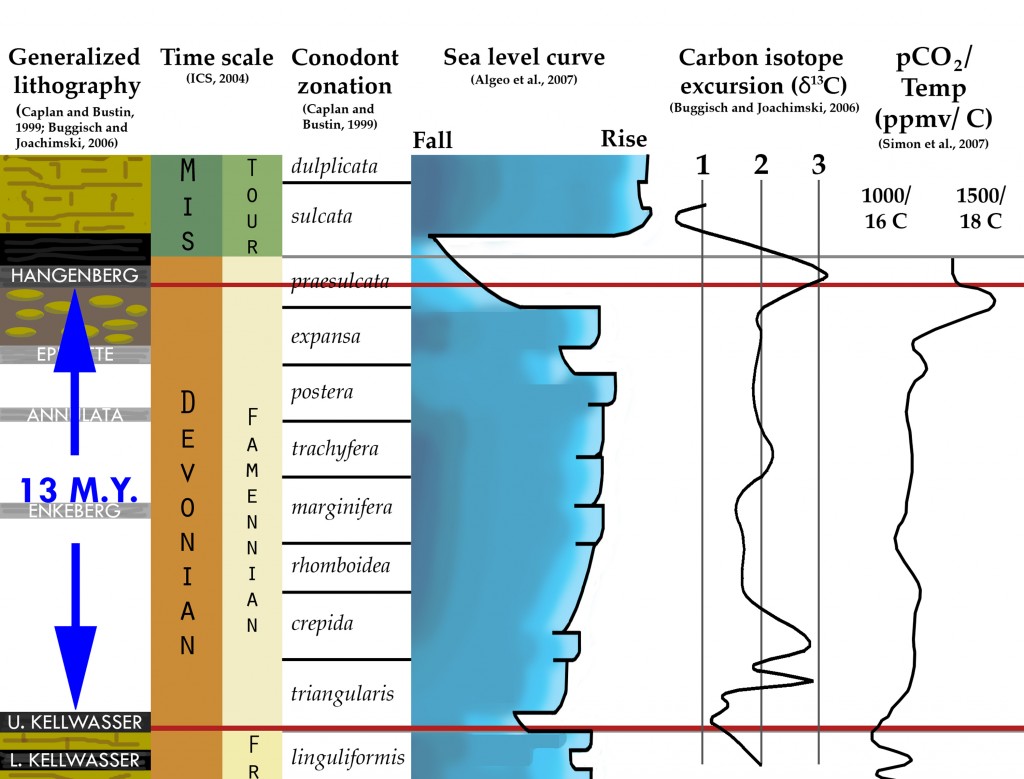
The Devonian is marked by a number of major mass extinctions. The two largest are the Kellwasser and the Hangenberg events, both marked by black shales in marine settings, sea level swings and temperature changes. The Kellwasser eliminated coral reefs and is linked to a 25 million year biotic crisis, while the Hangenberg is tied to extinctions of trilobites, eurypterids and ammonoids.
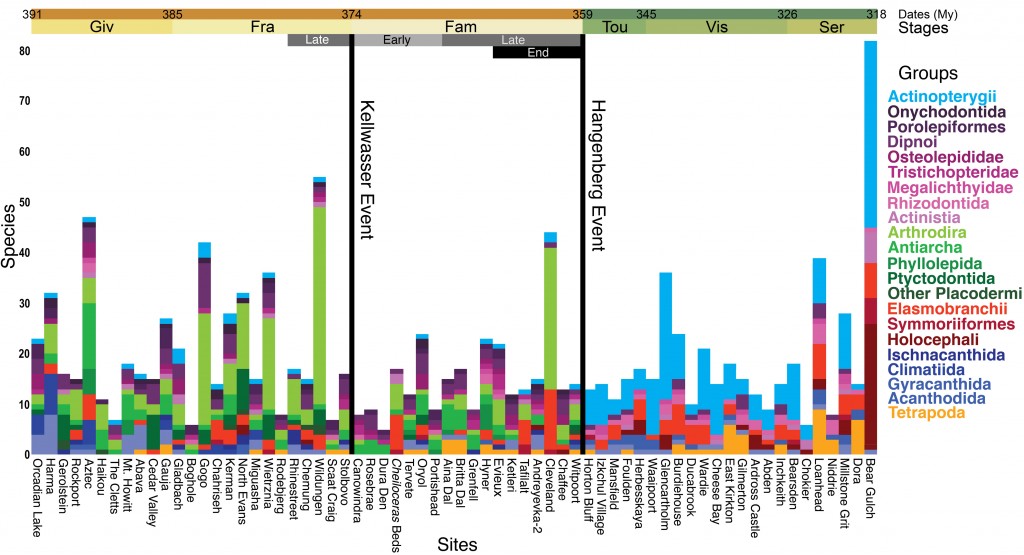
Recent research has shown that the vertebrates were largely unaffected by the Kellwasser event. However, the end-Devonian Hangenberg event is linked to complete turnover of vertebrate ecosystems around the world, as shown by this histogram of jawed fish species counts. Lobe-finned fishes in purple, placoderms in green, sharks in red, ray-finned fishes in light blue, acanthodians in dark blue, and tetrapods in orange (from Sallan and Coates 2010).
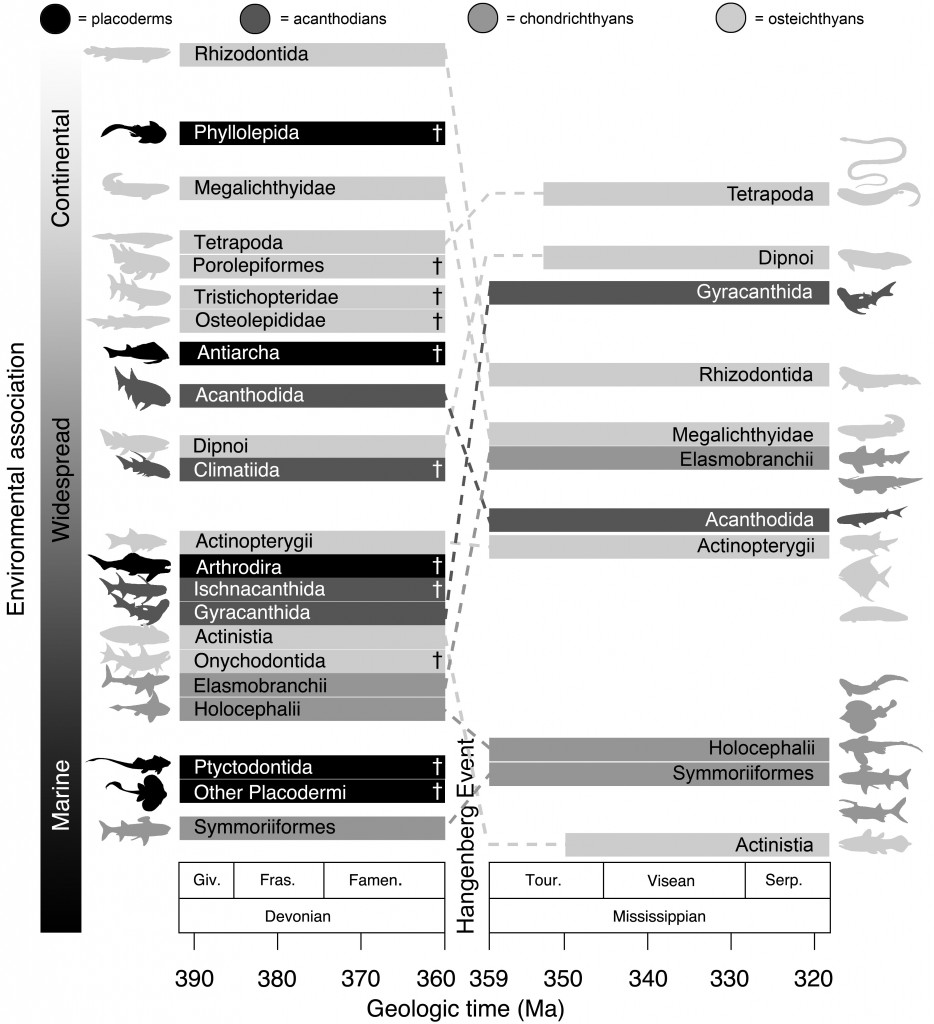
Extinctions took place in both salt and freshwater, leading to extreme habitat shifts among most survivors. Additionally, 44% of major groups were lost right at the Hangenberg boundary (from Friedman and Sallan 2012).

The Hangenberg event was followed by period of low tetrapod, and fish, diversity known as “Romer’s Gap.” This recovery interval lasted 10-20 million years and saw the rise of new vertebrate forms, including the first “eels”, many shell-crushing sharks, and the first tetrapods with 5 digits. Immediately following the end Devonian extinction, species appear to have been much smaller than species occupying the same niches in the Devonian. (drawing by Lauren Sallan)

By the middle of the Mississippian, vertebrate ecosystems were once again stable. These had a distinctly modern flavor; ray-finned fishes and sharks dominated the seas while tetrapods had made it onto to land. (Painting by Bob Nicholls)
Unless otherwise stated, all images courtesy and copyright of Dr. Sallan.

